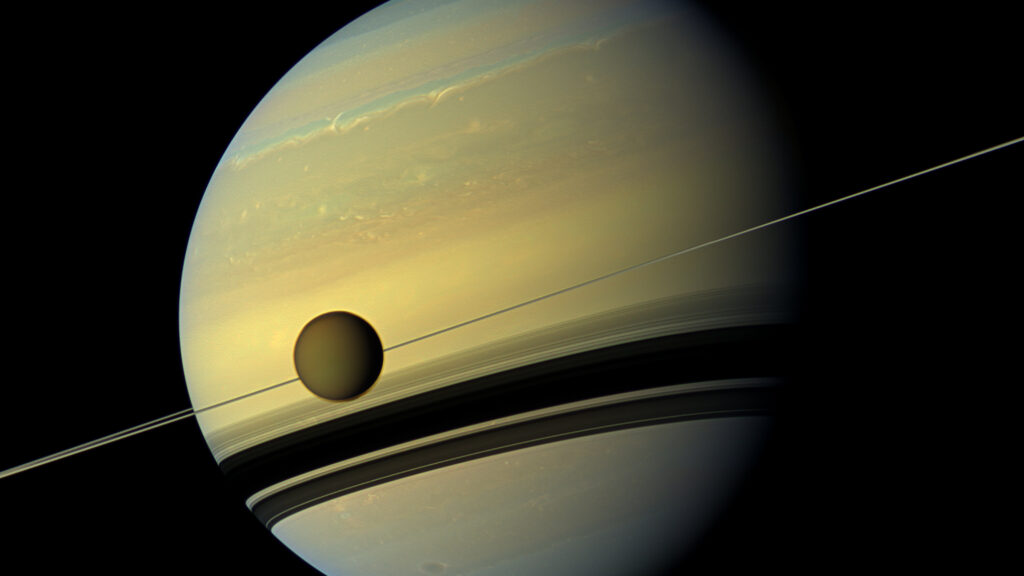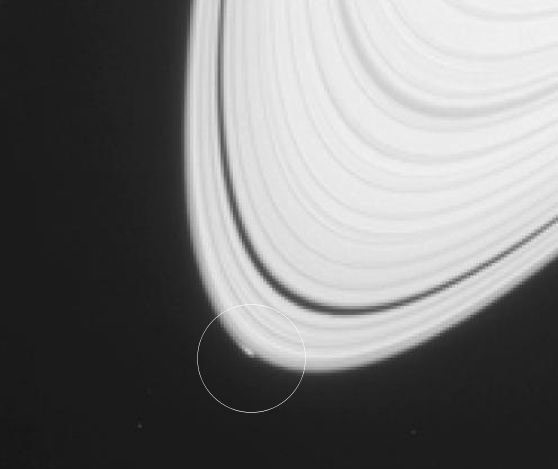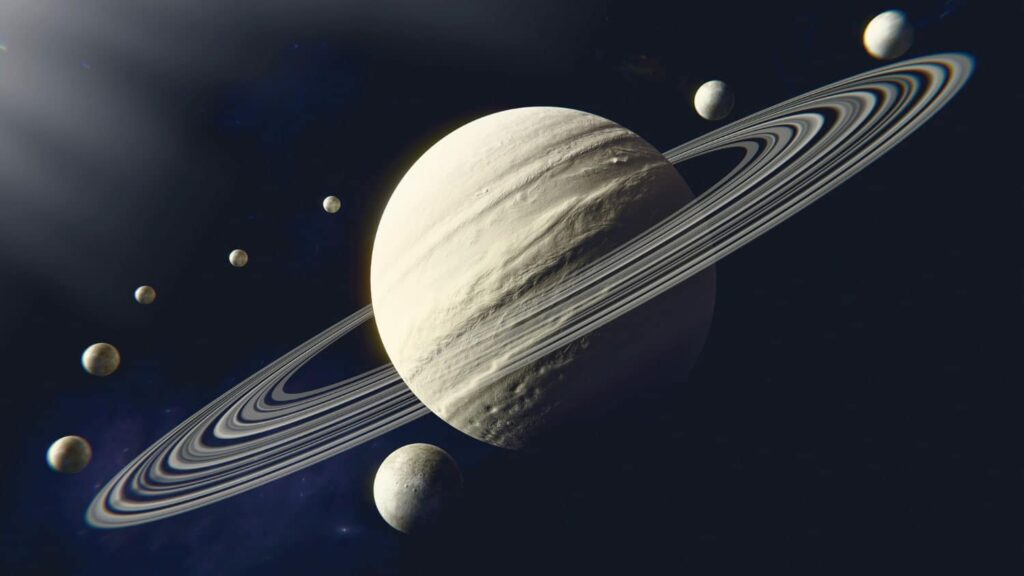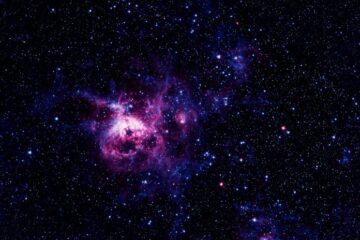
The Saturnian system, with its dazzling rings and family of diverse moons, has long been a centerpiece of cosmic wonder. From the methane lakes of Titan to the icy geysers of Enceladus, it seems this gas giant has already shared its deepest secrets. But the cosmos always has surprises in store. Astronomers have just confirmed the discovery of a new moon of Saturn, a tiny world that is quietly forcing us to rethink what we know about planetary systems.
This isn’t just another rock in the crowd. The detection of this diminutive moon, a testament to both human ingenuity and the dynamic nature of our solar system, provides a crucial clue to the ancient, violent processes that built the planets. Let’s journey to the ringed world and meet its newest known member.
The Hunt in the Rings: How You Find a Hidden Moon

You might wonder, in an age of powerful space telescopes, how a moon could remain hidden for so long. The answer lies in its size and location. This new moon is incredibly small—likely no more than a few kilometers across. To put that in perspective, it’s more like a city in space than a world.
So, how was it found? The secret wasn’t in seeing the moon directly, but in seeing its gravitational signature.
Imagine dragging a magnet through a pile of iron filings. Even if you can’t see the magnet, you can see the path it carves and the way the filings are pulled along. This is precisely how astronomers using data from the Cassini spacecraft detected the moon. They observed a tiny, yet distinct, propeller-like gap in Saturn’s A ring, one of its brightest and most prominent rings. This “propeller” structure, officially named Peggy, is the gravitational wake of a tiny moonlet, clearing a path through the ring particles as it orbits.
While the Cassini mission ended in 2017, its treasure trove of data continues to yield discoveries like this one, confirmed through painstaking analysis and follow-up observations.
Meet the New Moon: What We Know About Saturn’s Latest Child

The moon, currently known by the technical designation S/2009 S 1 (and affectionately nicknamed “Peggy”), is a fascinating subject.
- Size and Composition: It is tiny, with an estimated diameter of only about 300 meters. It is almost certainly composed of water ice, like the ring particles themselves, making it a gleaming, irregularly-shaped iceberg orbiting the planet.
- Location, Location, Location: It resides within the A ring, nestled in a 500-mile-wide gap known as the Keeler Gap. Its orbit is remarkably close to the planet, completing a revolution in just hours.
- A Fleeting Existence? This moon exists in a delicate balance. The forces at play so close to Saturn are immense. It’s possible that this moon is a temporary feature, slowly being eroded by gravitational forces or collisions. Alternatively, it could be a stable “shepherd moon,” its gravity helping to maintain the sharp edges of the gap it calls home.
Beyond a Single Discovery: Why This Tiny Moon Matters
The discovery of a new moon is always exciting, but why does this one, in particular, matter to planetary scientists? The implications are profound.
1. A Window into Planet Formation. This moon is likely a living fossil from the solar system’s birth. The prevailing theory is that Saturn’s rings and small inner moons are remnants of the protoplanetary disk of ice and dust that surrounded the infant planet. Finding a new moon here is like finding a missing piece of a 4.5-billion-year-old puzzle. It helps us test models of how dust and ice clumped together to form larger bodies in the early solar system.
2. The Dynamic Ring System. The discovery confirms that Saturn’s rings are not a static, frozen painting. They are a dynamic, ever-changing environment. Moons are born, collide, and are destroyed within this disk. Observing Peggy gives us a real-time look at the processes that shape and evolve planetary rings.
3. A Testament to Cassini’s Legacy. This finding underscores the incredible value of the Cassini-Huygens mission. Even years after the spacecraft plunged into Saturn’s atmosphere, its data continues to fuel new science and reshape our understanding. It’s a gift that keeps on giving.
Could There Be More? The Future of Lunar Discovery at Saturn

The simple answer is: almost certainly.
If a moon this small can be detected, it suggests there is a whole population of even smaller moonlets—ranging from Peggy’s size down to large icebergs—lurking within the rings, waiting to be found. Future missions with more sensitive instruments will likely uncover dozens, if not hundreds, more of these hidden worlds.
The next steps for astronomers are to continue monitoring Peggy’s orbit and its interaction with the ring. By studying its motion, they can learn more about its mass, density, and ultimately, its origin story. Missions concept like an Orbilander (an orbiter and lander combined) to Saturn could one day provide even more stunning details about these enigmatic inner moons.
Conclusion: A Small World with a Big Impact
The discovery of a new moon of Saturn is a powerful reminder that our solar system is still a place of active discovery. It’s not a museum exhibit but a living, breathing, and constantly changing system.
This tiny, icy moonlet, hidden in plain sight for decades, does more than just add a number to Saturn’s growing lunar count. It challenges our assumptions, provides a unique laboratory for studying planetary formation, and proves that even the most studied corners of our cosmic neighborhood still hold secrets waiting to be revealed. The journey to understand Saturn is far from over, and its newest moon is now guiding the way.
For more details:- NASA Saturn moons
FAQ: Your Questions About Saturn’s New Moon, Answered
Q: How many moons does Saturn have now?
A: The count is constantly being updated as new discoveries are confirmed. As of this writing, Saturn has over 140 confirmed moons, making it the “moon king” of our solar system. This new discovery adds to that growing list.
Q: What is the new moon’s name?
A: It is currently known by its provisional designation S/2009 S 1. It is often referred to by its nickname “Peggy,” derived from the propeller structure it creates. Formal naming by the International Astronomical Union (IAU) often comes later and follows specific conventions, often drawing from mythology.
Q: Can I see this new moon with a telescope?
A: Unfortunately, no. This moon is far too small and faint to be seen with any amateur or even most professional Earth-based telescopes. Its discovery was only possible through the precise data collected by the Cassini spacecraft in close orbit around Saturn.
Q: Why is finding a new moon in Saturn’s rings important?
A: It helps scientists understand how planets and moons form from disks of dust and gas. This moon is a “probe” into the conditions of the early solar system and teaches us about the dynamic processes that continue to shape Saturn’s rings today.



1 Comment
Sam · October 7, 2025 at 3:10 am
❤️❤️🔥🔥🔥